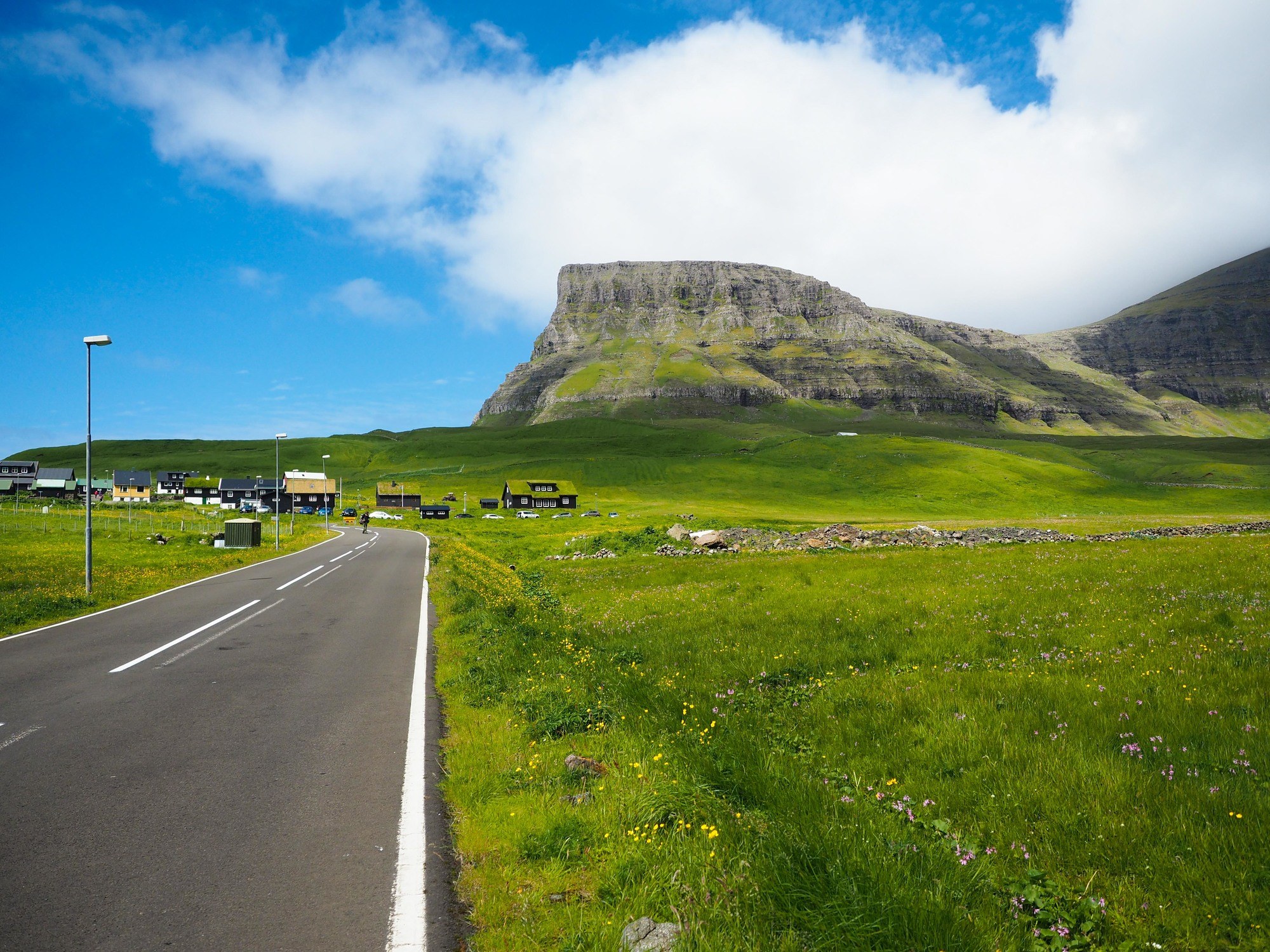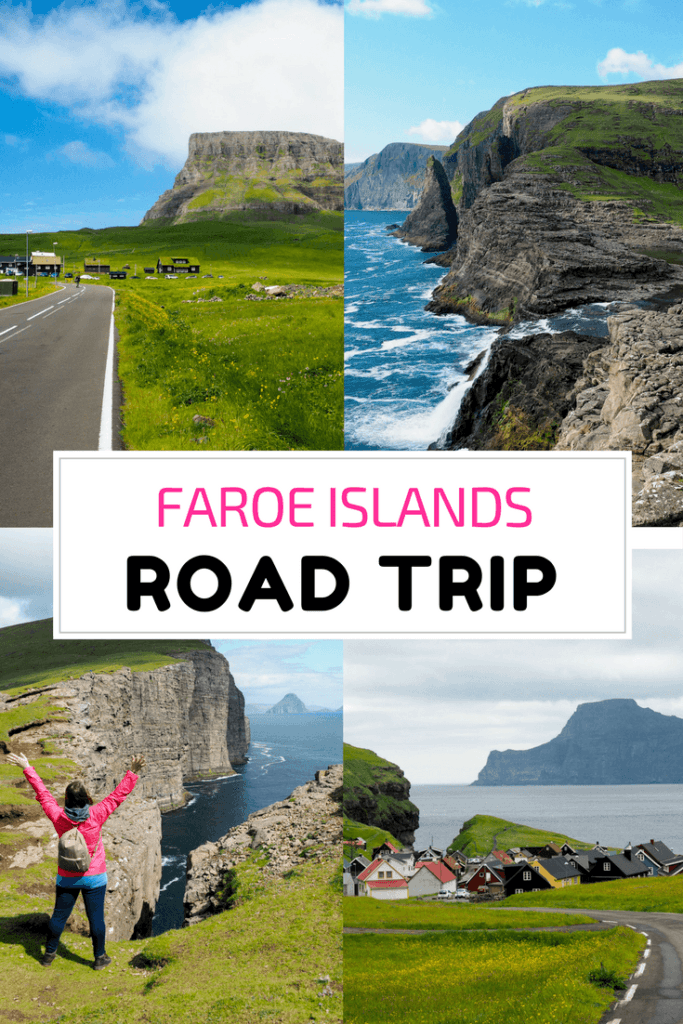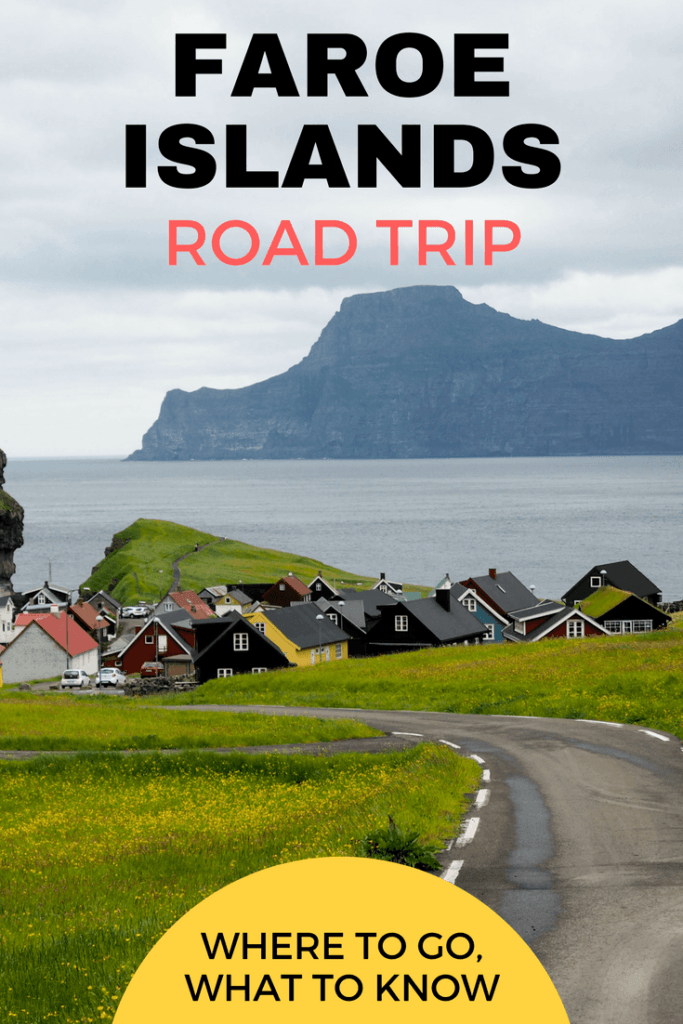Road Tripping in the Faroe Islands: Where to Go and What to Know

Picture this: A country with mind-blowing landscapes, yet hardly any tourists. Good roads and short driving distances, and basically no language barrier since the locals speak excellent English.
Sounds like an ideal road trip destination, right?
I think so. In fact, I'm convinced that the Faroe Islands were made for road tripping.

During my week in this small island group, I found myself repeating this over and over. I couldn't get over how easy it was to get around by car in the Faroe Islands, and how much you could see in just a short amount of time.
If you're looking for a road trip destination that hasn't been Instagrammed to death yet, set your sights on this small group of islands in the North Atlantic.

And then use these tips for your own Faroe Islands road trip:
Where to go on a Faroe Islands road trip
The Faroe Islands are comprised of 18 rocky, volcanic islands. Some are accessible only by boat or helicopter, but the main (bigger) islands are interconnected by bridges and undersea tunnels. Here are some of the highlights you won't want to miss, separated by island:
1. Vágar
The island of Vágar is the island most visitors to the Faroe Islands will see first, since it's where the only airport is located. This is where you'll likely pick up your rental car and start your adventure. Before heading off the island, though, consider visiting these iconic spots:
Múlafossur waterfall
This waterfall crashing into the sea near the village of Gásadalur is *the* quintessential image of the Faroe Islands. This is the one you've maybe seen before. It's only about 15 minutes away from the airport, making it a great first stop.

There's a parking lot near the start of the village of Gásadalur, and then you can walk back down the road to a gravel trail that leads through some sheep fields.

Go all the way down the trail (you'll have to open/close some livestock gates on the way), and you'll find this famous view.

Trælanípa hike
Also not far from the airport (maybe about a 10-minute drive) is the start of one of the coolest (and easiest) hikes in the Faroe Islands. A flat trail leads you alongside Sørvágsvatn – the largest lake in the Faroe Islands – and then up to the sea cliffs at Trælanípa.



From atop the cliffs, it almost looks as though Sørvágsvatn is “floating” above the Atlantic Ocean.

On your way back down, you can detour slightly to Bøsdalafossur, a waterfall that empties out into the ocean over some fantastic lava rock formations.

The whole hike will only take you 3-4 hours out and back, making for a great morning or afternoon activity.
2. Streymoy
Streymoy is the largest island in the Faroes, and also where most of its 50,000 residents live. Must-sees here include:
Tórshavn
The first Norse settlers in the Faroes established a parliament on the Tinganes peninsula around 850 AD. Today, that peninsula is part of Tórshavn, the capital city of the Faroe Islands. The city's name in Danish means “Thor's Harbor,” which hearkens back to Norse background of this part of the world.

Tórshavn is a cool city. There are hip cafes and delicious restaurants, but also old wooden buildings with turf roofs left in Tinganes – the oldest one is roughly 500 years old.


Take some time to wander around Tinganes, grab coffee near the harbor, and try Aarstova for a high-end dinner made with local Faroese ingredients.

Tjørnuvík
Tjørnuvík is the northernmost village on Streymoy. To get to it, you have to drive up a very narrow road that winds itself along the side of a mountain (yes, it's terrifying if another car comes the other way!), but the views at the end are so worth it.

The colorful village is tucked into a bay at the foot of towering green mountains. There's a semi-marked trail that will lead you up to a viewpoint, which is worth making a detour to do.


Saksun
I didn't make it to the little village of Saksun on my trip, but it's a popular one because of its turf-roofed church and houses.
3. Eysturoy
The “East Island” of the Faroes is the second-largest island in the chain, and is connected to Streymoy by a short bridge.
Gjógv
My favorite place on Eysturoy was the small village of Gjógv. Its name means “gorge,” and there is indeed a small gorge here opening out into the sea.

The village itself is typical of a Faroese village: small, colorful, on the water, and surrounded by green mountains.


Gøta
The towns of Syðrugøta, Gøtugjógv, and Norðragøta make up the area of Gøta, a collection of villages on a fjord on the eastern side of Eysturoy. I found myself in Syðrugøta for the annual G! Festival (a very cool music festival with its main stage on the beach!), but I think this area would be well worth a visit even outside of festival season.

4. Northern islands
I did not make it to the northern islands on my trip, but you can reach one more island by car: Borðoy, which is home to Klaksvik, the second-largest city in the Faroe Islands.
From Klaksvik, you can catch a ferry to Kalsoy, which is popular with hikers (the photos I've seen of the Kallur Lighthouse are amazing!).
Things to know about driving in the Faroe Islands
Now that you have an idea of where to go in the Faroes, here are some things I think you should know about driving in the Faroe Islands:
Road conditions
Road conditions in the Faroe Islands are generally very good – every road I drove on was paved and well-maintained.
The main roads are all two-laned and wide, but beware that the roads leading to many of the villages (roads often marked as “Buttercup routes” on tourist maps) can be very narrow and winding. Be prepared to take these slow, and to veer off into designated pull-outs in order to let vehicles going in the opposite direction pass.

Tunnel fees
The Faroe Islands have multiple tunnels, including two sub-sea tunnels. These long underwater tunnels require you to pay a fee (DKK 100, or about $15) to use them. But you only pay the fee going one way, from the smaller island to the larger one. (So, the fee applies to driving from Vágar to Streymoy and from Borðoy to Eysturoy, but not the other way around.)

There are no toll booths at these tunnels, though. Instead, you pay your toll at a gas station (any nearby station works – just go in and tell them you want to pay your tunnel fee).
You need to pay your tunnel fee within three days of driving through a fee tunnel – but be sure to check with your rental car company, because I was told that some companies now include tunnel fees as part of your rental.
Get a map
Lastly, be sure to pick up a paper map of the Faroe Islands from the information center at the airport. Even if your rental car has a built-in GPS, there's a high probability that the GPS will be programmed for Denmark and won't recognize any destination in the Faroe Islands. (The car I had didn't even recognize that I was on roads when I turned my GPS on.)

You can find other practical tips for driving in the Faroe Islands here.
Getting to the Faroe Islands
Many people (incorrectly) assume that the Faroe Islands are extremely remote and difficult to get to. And while this may have been true a couple decades ago, it's not the case today.
Today, you can fly to the Faroe Islands on either Atlantic Airways or SAS. SAS now flies from Copenhagen to the Faroe Islands, offering one daily flight year-round. Atlantic Airways has direct flights from cities in Denmark, Scotland, Iceland, and Norway, with their main route also originating in Copenhagen.
And the best part? These flights are not exorbitantly expensive, and they tend to be under 2 hours one-way.

(Or, if you want to have a real adventure, you can also take a Smyril Line ferry from Denmark or Iceland.)
When to go to the Faroe Islands
So when is the best time to do a road trip like this? Definitely the summer months. My trip was in July, when the weather was mild (well, by Faroese standards!) and the days were long. It doesn't get hot here in the summer (it hovered in the 50s F for my entire trip), meaning it's perfect for hiking and exploring.
(Just make sure to pack a hat and gloves, just in case!)

Where to stay on the Faroe Islands
Thanks to the roads, bridges, and tunnels, nothing is very far away in the Faroe Islands. You can get from Tórshavn to Tjørnuvík or Gjógv in just over an hour – meaning you could easily base yourself in Tórshavn for your whole trip if you wanted.
You'll find the largest selection of hotels and restaurants in Tórshavn anyway, which makes it an ideal base. Hotels to check out in Tórshavn include:
Hotel Foroyar – The top-rated hotel in Tórshavn. (Read reviews on TripAdvisor | Book here)
Hotel Tórshavn – Has a great location downtown, within walking distance of both Tinganes and the harbor. (Read reviews on TripAdvisor | Book here)
If you do feel like staying outside of the capital for a night or two, consider making Gjógv your second base:
Gjaargardur Guesthouse Gjógv – This is the only accommodation available in Gjógv, but it's lovely. A nice guesthouse and restaurant sitting on a hill overlooking the village. (Read reviews on TripAdvisor | Book here)
READ NEXT: Love Puffins? Go to Mykines in the Faroe Islands
I think that just about covers road tripping in the Faroe Islands! Who's ready to plan a Faroe Islands road trip now?
Pin it for later:
Note: This post was brought to you as a result of the #MyFaroeIslandsHome campaign, created and managed by iambassador in partnership with Visit Faroe Islands. As always, though, all opinions are 100% my own.

Amanda Williams is the award-winning blogger behind A Dangerous Business Travel Blog. She has traveled to more than 60 countries on 6 continents from her home base in Ohio, specializing in experiential and thoughtful travel through the US, Europe, and rest of the world. Amanda only shares tips based on her personal experiences and places she's actually traveled!












I know you said you stayed a week but how long do you recommend? I’m trying to plan out my adventures for 2019 and this is on my list but I need to think about PTO. Great job on the article!!!
I would recommend at least 4 to 5 days! I think you can see all the highlights in that amount of time.
This is beautiful article about Faroe island Amanda. This article make want to visit the island right now. This looks like green landscapes, English speaking natives, waterfalls what else do we want fro a good road tripping destination? . Thanks for sharing this amazing island with us. Keep these coming mate. Cheers.
Hello, red houses with grass on the roof! Hello, beautiful little gorge! Hello, floating lake! I’m taking that sheep home, it’s adorable how he looks like he just woke up and took a stroll to find food. I think I’m moving to Faroe when I retire
It would be a lovely place to retire in one of those little turf-roofed houses! (Though I’m not sure I’d enjoy the winter weather there!)
Oh dear…I can feel my travel bucket list expanding with a visit to these magical-looking islands. Very long way to get there though (from where I live in New Zealand)
Pretty much as far away as you can get from New Zealand! But if you ever get the chance, you should definitely go!